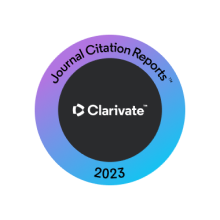Abstract
Objective: Aortopulmonary window (APW) is a rare congenital heart defect. It occurs as an isolated cardiac lesion or in association with other cardiac anomalies and rarely with abnormal coronary arteries. The spectrum of cardiovascular anomalies associated with APW and overall management and outcome in the current era were reviewed.
Methods: Between 2001 and 2018, all patients diagnosed with APW were included. Based on associated cardiovascular anomalies, those patients were divided into 2 groups: simple APW group and complex APW group (APW with asso- ciated other cardiovascular anomalies). All cases were followed longitudinally. The outcomes are described.
Result: Twenty patients underwent APW repair including 2 (10%) in simple APW group and 18 (90%) in complex APW group. Their mean age and weight were 4.8 ± 1.8 months and 4 ± 0.4 kg, respectively. APW Type I was confirmed in 65% followed by Type III in 20% and then Type II in 15% of the patients. In the complex APW group, atrial septal defect was the commonest associated cardiac lesion occurring in 8/20 (40%), followed by ventricular septal defect, interrupted aortic arch, and pulmonary artery anomalies in 25% of each. The presence of patent ductus arteriosus (PDA) was found in 40% of APW cases with 2/3rd of them in association with interrupted aortic arch. Two patients (10%) had unusual coronary anomalies that required repair, both with APW Type I. Associated non-cardiac anomalies were found in 30% of cases. Risk Adjustment for Congenital Heart Surgery (RACHS-1) score frequencies were between 2 and 4. Only one patient had reactive pulmonary hypertension related to chronic lung disease. All patients underwent surgical correction with median age of 2 month at the time of repair (interquartile range, 2 weeks to 4.5 months). Mean duration of mechanical ventilation, pediatric cardiac ICU and hospital length of stay were 2.8 ± 0.5, 9 ± 3 and 26 ± 6 days, respectively. All patients survived with no residual APW with mean follow-up duration of 4.5 years.
Conclusion: Majority of APW are associated with other cardiovascular anomalies (90%) including coronary abnor- malities (10%). Early surgical repair of APW and associated lesions showed excellent survival rate, freedom from re- intervention need within an average of 4.5 years of follow up and no evidence of persistent pulmonary hypertension post repair.
Recommended Citation
Bin-Moallim, Mohammed; Hamadah, Hussam K.; Alhabshan, Fahad; Alghamdi, Abdullah A.; and Kabbani, Mohamed S.
(2020)
"Aortopulmonary Window: Types, Associated Cardiovascular Anomalies, and Surgical Outcome. Retrospective Analysis of a Single Center Experience,"
Journal of the Saudi Heart Association: Vol. 32
:
Iss.
2
, Article 11.
Available at: https://doi.org/10.37616/2212-5043.1035
Author answer to proof
Final Aortopulmonary Window_ Types Associated Cardiovascular Anomalies.pdf (579 kB)
Final proofed PDF
Final Aortopulmonary Window_ Types Associated Cardiovascular Anomalies.pdf (579 kB)
Creative Commons License

This work is licensed under a Creative Commons Attribution-Noncommercial-No Derivative Works 4.0 License.




